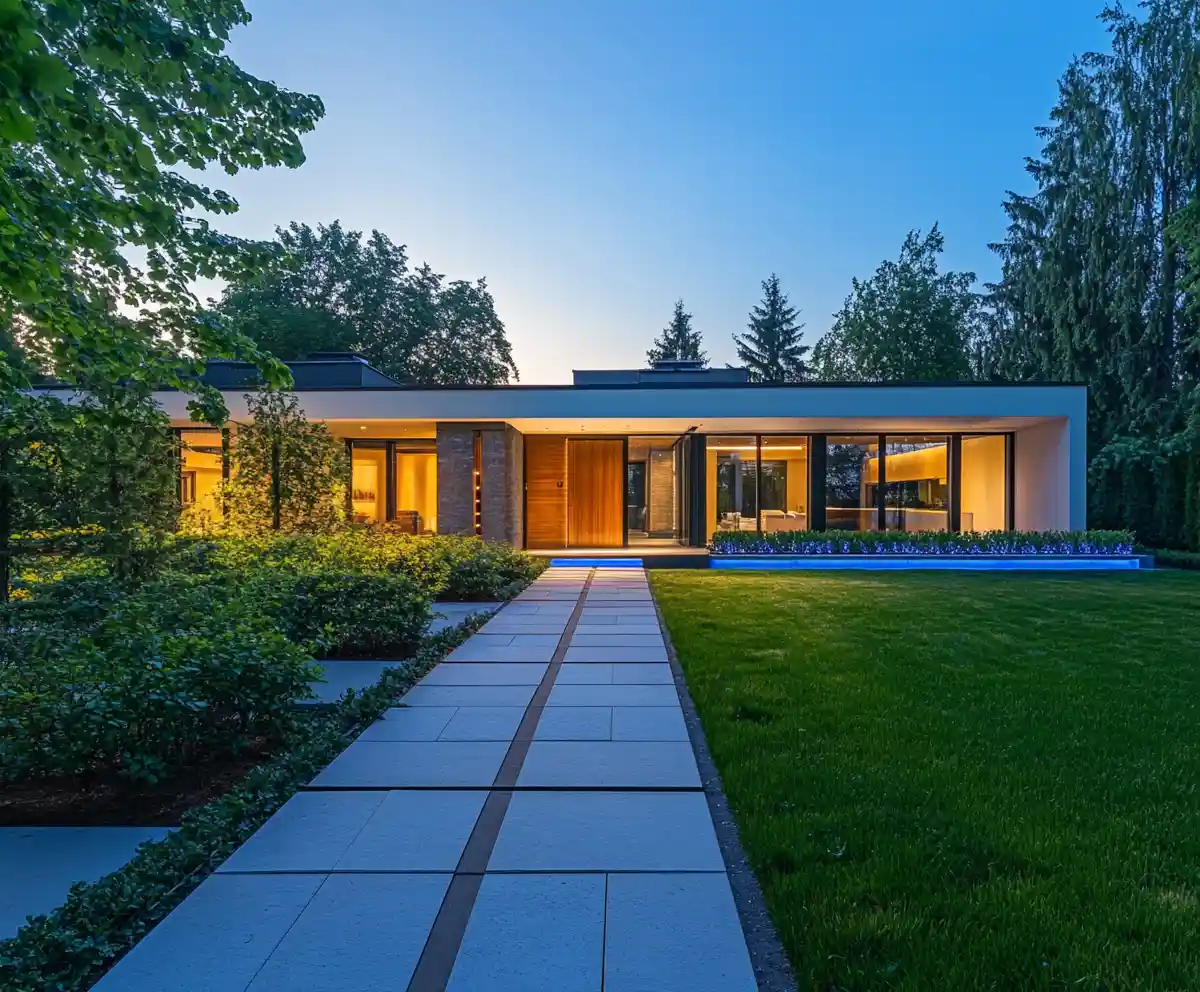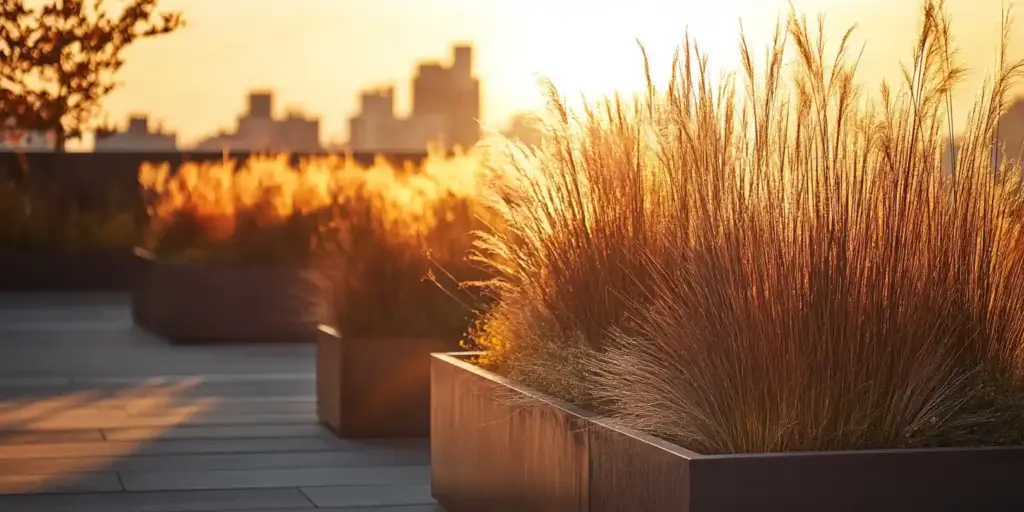Dreaming of boosting curb appeal, but working with a tiny front yard? Don’t worry—small can still be stunning! With clever landscape design for small front yard areas, you can create a welcoming, stylish space that feels much larger than it actually is.
Whether your entryway is narrow, asymmetrical, or tucked between fences, the right design choices can make every square foot shine. This guide reveals 10 smart, creative landscaping ideas that bring personality and functionality to even the smallest spaces.
1. Utilize Vertical Garden Space
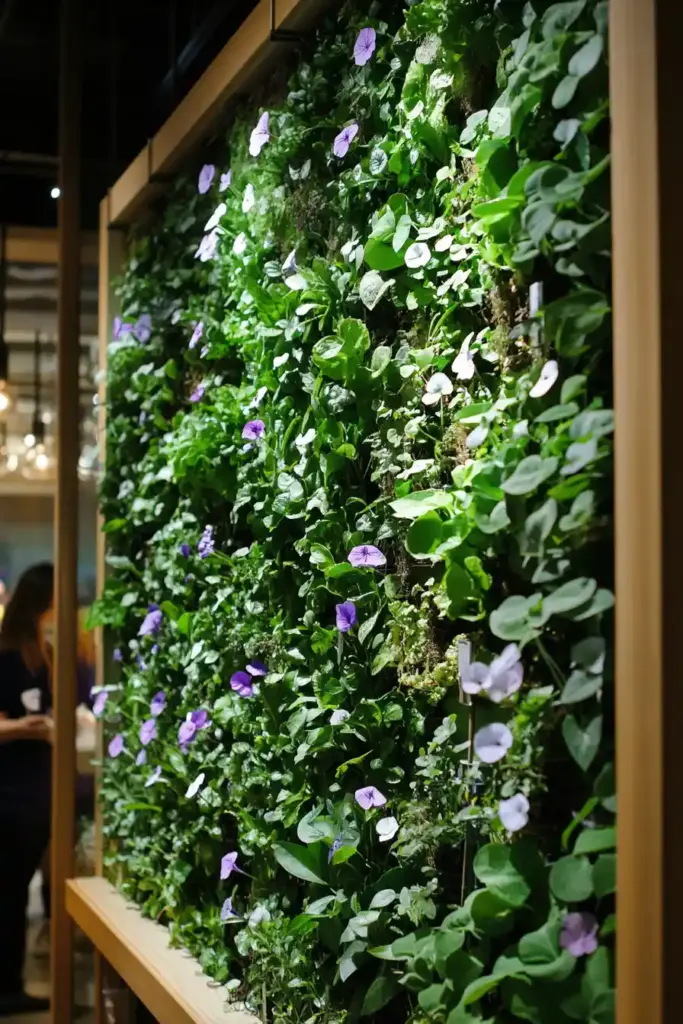
Go Up When You Can’t Go Out
When ground space is limited, think vertical. A vertical garden lets you layer plants upward instead of outward, giving you more greenery without crowding the yard. It also draws the eye up, which visually expands the area—an easy win for curb appeal.
From wall-mounted planters to trellises brimming with vines, vertical elements double as living artwork and privacy screens. They add texture, color, and a lush, cozy vibe—all without eating up your precious pathway or entry space.
Best Plants for Vertical Gardens
- Succulents and creeping figs – Great for compact growing and low maintenance.
- Herbs like thyme, basil, and mint – Practical, fragrant, and perfect for sunny walls.
- Fern varieties and pothos – Ideal for shaded spots needing a little love.
DIY Vertical Garden Ideas
- Repurpose wooden pallets or hanging shoe racks as tiered planters.
- Add hooks, shelves, or wire grids to fences or exterior walls for a quick install.
- Use sleek, durable containers like fiberglass rectangle planters to ensure longevity and modern aesthetics.
💡 Pro Tip: Keep vertical gardens near the entrance or walkway edges to avoid crowding high-traffic areas.
2. Embrace Minimalist Landscaping
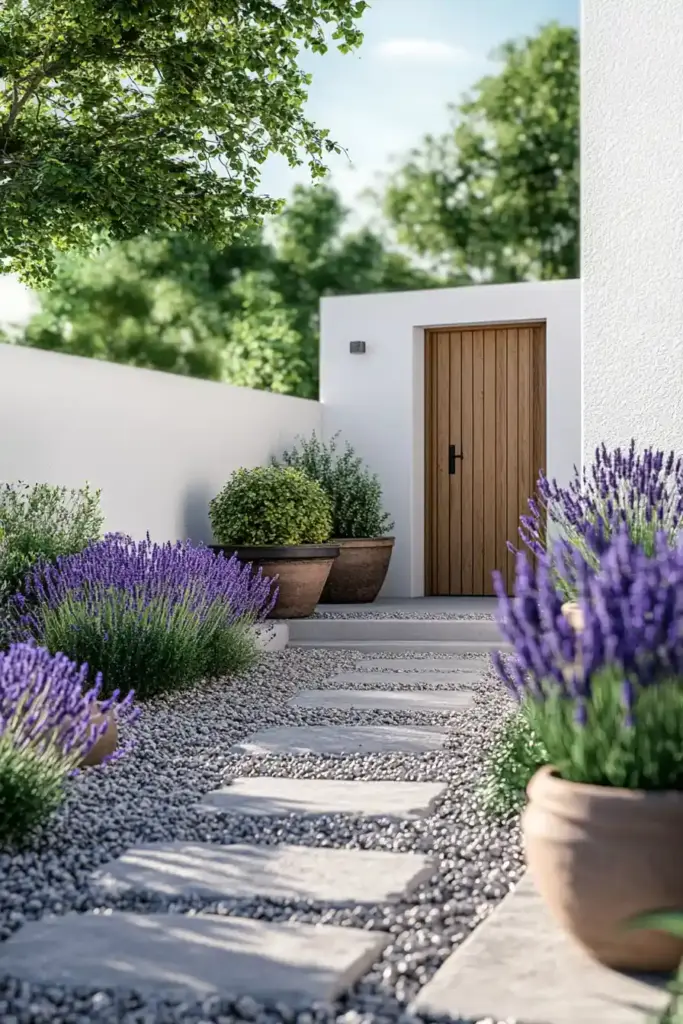
Less Is More—Especially in Small Spaces
When you’re designing a small front yard, clutter is the enemy. That’s where minimalist landscaping comes in—it’s all about doing more with less. Instead of cramming in too many elements, focus on clean lines, purposeful design, and a curated plant palette that lets each feature breathe.
This style is both modern and timeless. It brings calm and clarity to tight spaces while still leaving a strong visual impression.
Why Minimalism Works for Small Yards
- Maximizes space visually – Open areas feel larger and more inviting.
- Easier to maintain – Fewer elements mean less watering, pruning, and upkeep.
- Cost-effective – Simplicity cuts down on materials and long-term expenses.
Key Minimalist Design Elements
- Stick to 2–3 hardscape materials (like concrete, wood, or stone) for harmony.
- Use a limited color scheme—think whites, greys, and soft greens—to reduce visual noise.
- Integrate symmetrical or repeated patterns for a cohesive feel.
- Group plants by form or tone rather than mixing too many species.
🌿 Design Tip: Use sleek containers in geometric shapes to reinforce the minimalist aesthetic while organizing your plant layout.
3. Incorporate Eye-Catching Pathways
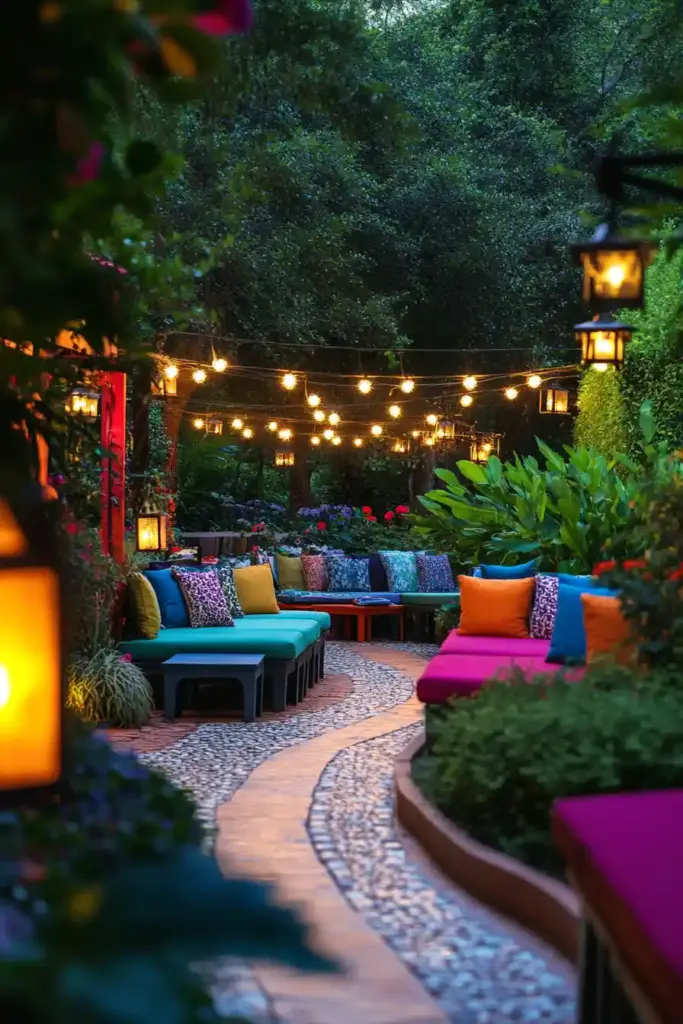
Guide the Eye—and the Feet
A small front yard doesn’t need a full walkway to make an impact. With the right pathway design, you can create visual structure, improve flow, and even make the space feel larger. A well-placed path defines zones, directs movement, and adds charm—all while enhancing curb appeal.
The best part? You don’t need a big budget or a lot of room to pull it off.
Creative Materials That Elevate the Look
- Natural stone – Organic, timeless, and blends effortlessly with greenery.
- Gravel or crushed granite – Permeable, affordable, and low-maintenance.
- Pavers with grass joints – A playful way to add texture and soften the look.
Don’t be afraid to mix materials—a gravel base framed with brick edging or wide stone pavers separated by turf adds rhythm and movement to your yard.
Small-Yard Pathway Tips
- Curved paths help create the illusion of depth in shallow or narrow yards.
- Border lighting not only adds ambiance but improves safety after dark.
- Use planters as visual guides, leading the eye (and guests) toward your entrance.
✨ Design Insight: In small spaces, your pathway can double as a focal point. Keep the edges tidy and incorporate plants or lighting for extra polish.
4. Add Charming Focal Points
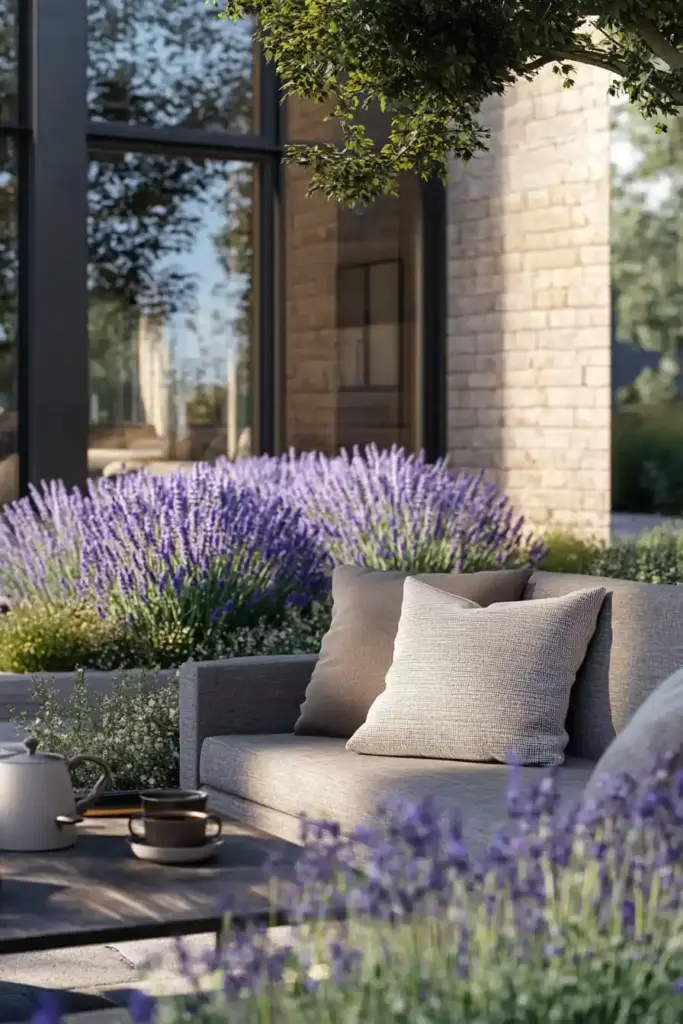
Create a Visual Anchor That Wows
A well-placed focal point can completely transform how a small front yard feels. It draws attention, creates a sense of balance, and gives the eye somewhere to rest. In compact landscapes, your focal point should be bold enough to stand out—yet scaled to avoid overwhelming the space.
Think of it as the “centerpiece” of your front yard story.
Small-Yard Focal Point Ideas
- Decorative planters – Choose bold colors or sculptural shapes to add a pop of interest.
- Sculptures or water features – Slim fountains, abstract statues, or rustic urns can make a big impact.
- Statement furniture – A bright bistro chair or vintage bench doubles as both art and function.
Choosing the Right Feature for the Space
- Stick to items under four feet tall for balance.
- Use neutral or natural tones that complement your home’s exterior.
- Match materials to existing hardscape—e.g., a slate sculpture with a stone walkway.
🎨 Expert Tip: Keep the surroundings of your focal point minimal to let it truly shine. Too much nearby “visual noise” dilutes the impact.
5. Design with Color and Contrast

A Splash of Strategy Goes a Long Way
In small yards, color is more than decoration—it’s a powerful design tool. Strategic use of color and contrast can visually expand space, draw attention to key features, and add layers of interest without adding clutter.
Whether through plants, pots, or pathways, the right palette makes your yard feel dynamic and balanced.
How to Use Color Effectively in Small Landscapes
- Cool tones (like soft greens, blues, and purples) tend to recede, making spaces feel bigger.
- Warm colors (reds, oranges, yellows) pop forward, adding energy and focal depth.
- Use light-colored hardscapes (like white gravel or pale stone) to open up tight areas.
The goal is contrast—but with control. Avoid going too wild with your palette; instead, choose 2–3 complementary tones that repeat across your yard.
Great Plant + Material Combos
- Pair deep burgundy foliage with white gravel or silver containers for drama.
- Use bright flowers (like marigolds or calibrachoa) against dark planters for a vivid punch.
- Combine lush, rounded plants with tall, spiky grasses for textural contrast.
🎨 Pro Move: Echo colors from your front door, shutters, or house trim in your garden accents for a cohesive look that feels intentional.
6. Sustainable Landscaping Techniques
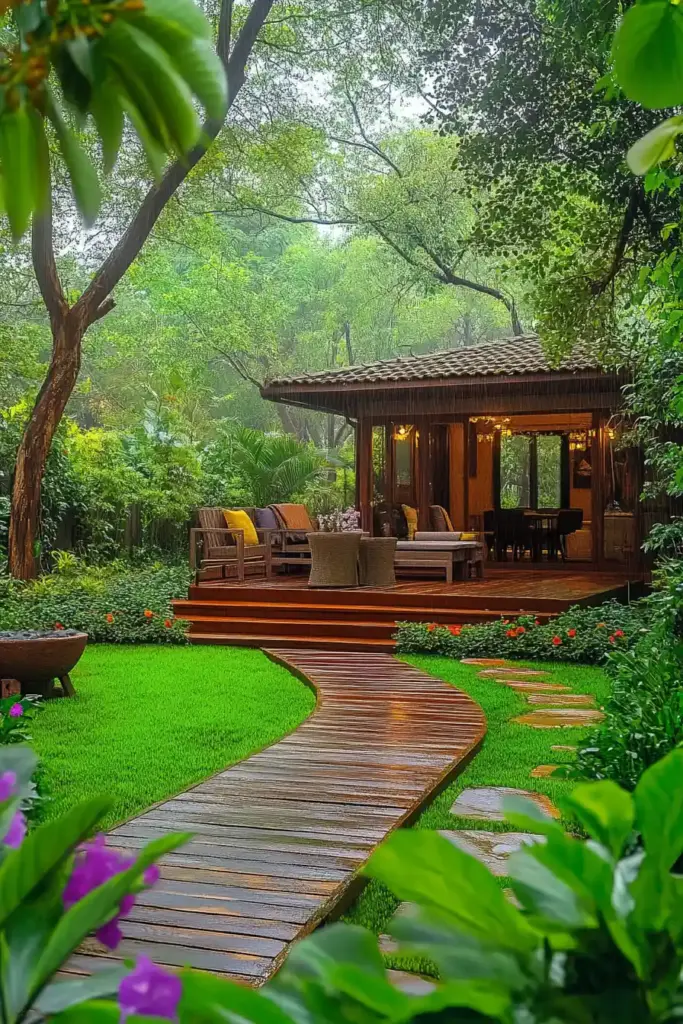
Smart, Stylish, and Environmentally Friendly
Looking great doesn’t have to come at the environment’s expense. Sustainable landscaping blends style with smart choices—saving water, reducing waste, and keeping your yard healthy for the long haul. It’s perfect for small front yards where every decision carries more weight.
Bonus? These practices often cut maintenance time and long-term costs too.
Easy Ways to Go Green in a Small Yard
- Use native plants – They’re adapted to your local climate, require less water, and support pollinators.
- Swap out lawns – Replace thirsty grass with gravel, mulch, or groundcovers like creeping thyme.
- Collect rainwater – A small rain barrel can water your containers for free.
Eco-Friendly Material Picks
- Recycled or reclaimed wood for edging, planter boxes, or decks
- Permeable paving stones that allow water to soak through and reduce runoff
- Fiberglass planters – Long-lasting, lightweight, and often made from recycled content
🌱 Sustainability Tip: Drought-tolerant plants like lavender, sedum, and yarrow are not only beautiful but also tough, making them ideal for low-water designs.
7. Maximize Functionality with Multi-purpose Elements
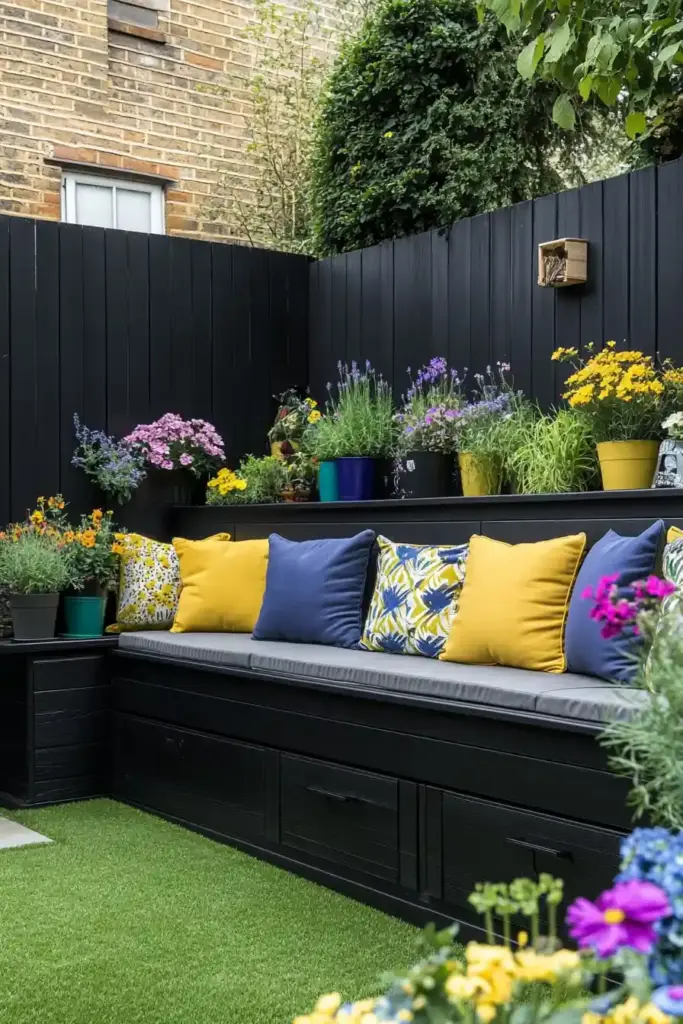
Design That Works Harder—Not Just Looks Good
When space is tight, your landscaping should do more than just look pretty. The secret to a small front yard that feels spacious and smart? Multi-purpose features. From built-in seating with storage to decorative planters that double as dividers, these dual-use elements reduce clutter and boost usability.
It’s all about combining style with substance.
Clever Multi-functional Ideas
- Benches with built-in storage – Perfect for hiding tools, cushions, or garden supplies.
- Planters on wheels – Easily rearrange them to adjust sunlight or open up space for guests.
- Folding furniture or pop-up tables – Bring them out when needed, tuck them away when not.
Design Tips for Everyday Use
- Use L-shaped seating with wide edges that can serve as small tables or planter rests.
- Choose large planters to discreetly cover unsightly areas like irrigation boxes or utility meters.
- Add lighting to structural elements (like under a bench or inside a planter) for dual function and nighttime charm.
🪴 Pro Insight: Combining form and function makes your small front yard feel more like a thoughtfully designed outdoor room—one that’s always ready for relaxation or entertaining.
8. Optimize Privacy with Thoughtful Planting
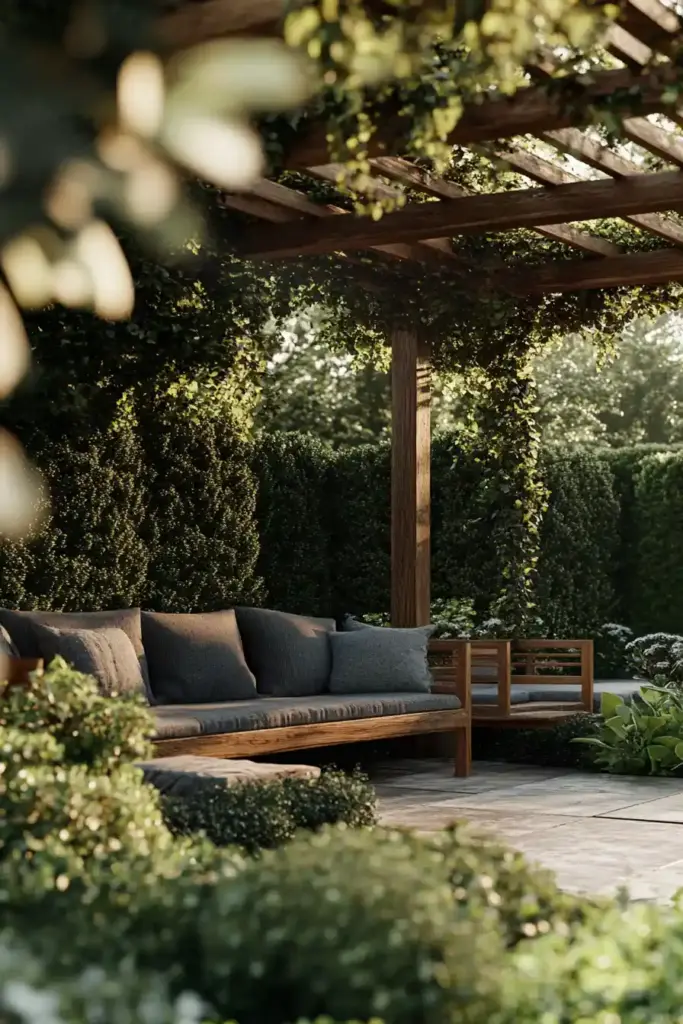
Create Seclusion Without Sacrificing Style
In tightly packed neighborhoods, a little privacy goes a long way. But bulky fences can feel harsh or out of place in a small front yard. The solution? Strategic planting. Thoughtful greenery can act as a soft, living barrier that enhances both privacy and beauty.
With the right plants, you can filter noise, block unwanted views, and still let in light and air.
Best Privacy Plants for Small Spaces
- Clumping bamboo – Fast-growing and elegant (just avoid the invasive kinds).
- Boxwood or arborvitae – Evergreen, compact, and easily shaped.
- Layered shrubs – Try dwarf nandina, loropetalum, or ornamental grasses in front of taller screens.
Stylish Privacy Solutions
- Add a trellis or slatted screen with climbing vines (like clematis or jasmine) for vertical coverage.
- Use planters with tall plants to build movable privacy zones.
- Create a green backdrop for your seating area using staggered plant heights for depth and softness.
🌿 Design Tip: Layer your privacy elements—combine a slim screen, tall plants, and trailing vines for maximum impact without crowding the space.
9. Illuminate Your Small Front Yard Elegantly
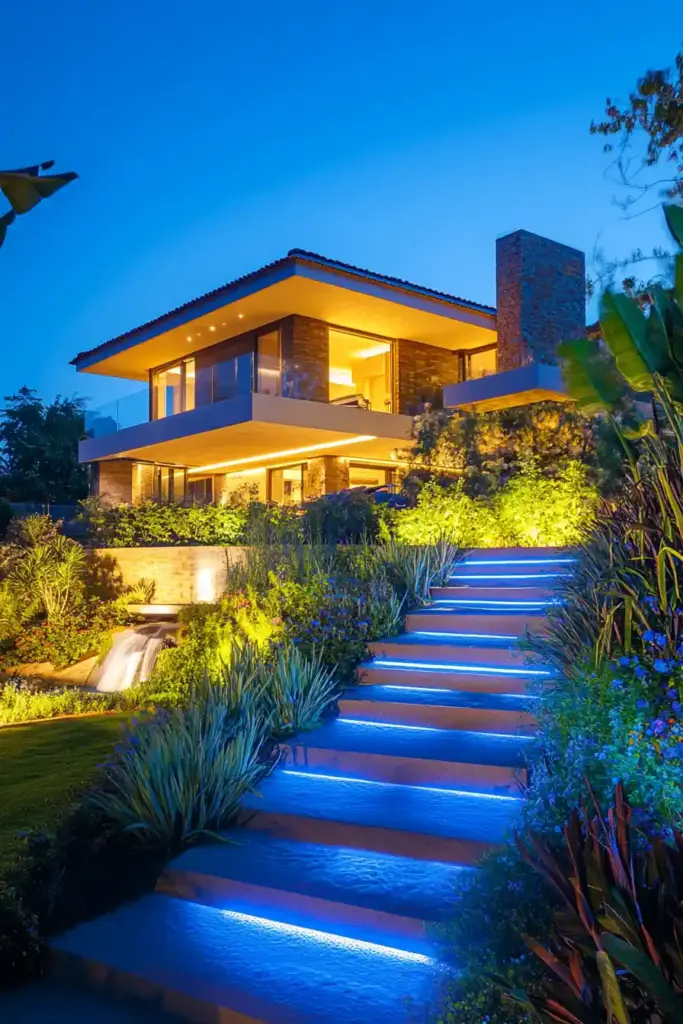
A Little Light Goes a Long Way
Lighting isn’t just about visibility—it’s a finishing touch that enhances mood, improves safety, and makes your front yard feel warm and welcoming, even after sunset. In small yards, the trick is to use layered, low-voltage lighting that highlights without overwhelming.
Think soft, strategic, and stylish.
Lighting Ideas That Make an Impact
- Pathway lights – Guide the way with in-ground LEDs or sleek bollards.
- Up-lighting – Highlight trees, sculptures, or architectural features for dramatic effect.
- Wall or down-lights – Cast a soft glow over planters or entry areas for ambiance.
Budget-Friendly Outdoor Lighting Options
- Solar lanterns – Eco-friendly and perfect for lining paths or porch steps.
- String lights – Add a magical touch draped along fences or trellises.
- Battery-powered spotlights – Easy to install and reposition as needed.
💡 Lighting Tip: Focus on 2–3 key areas, like the walkway, a focal plant, and your front door. This keeps things simple but visually effective.
10. Incorporate Creative Containers and Planters
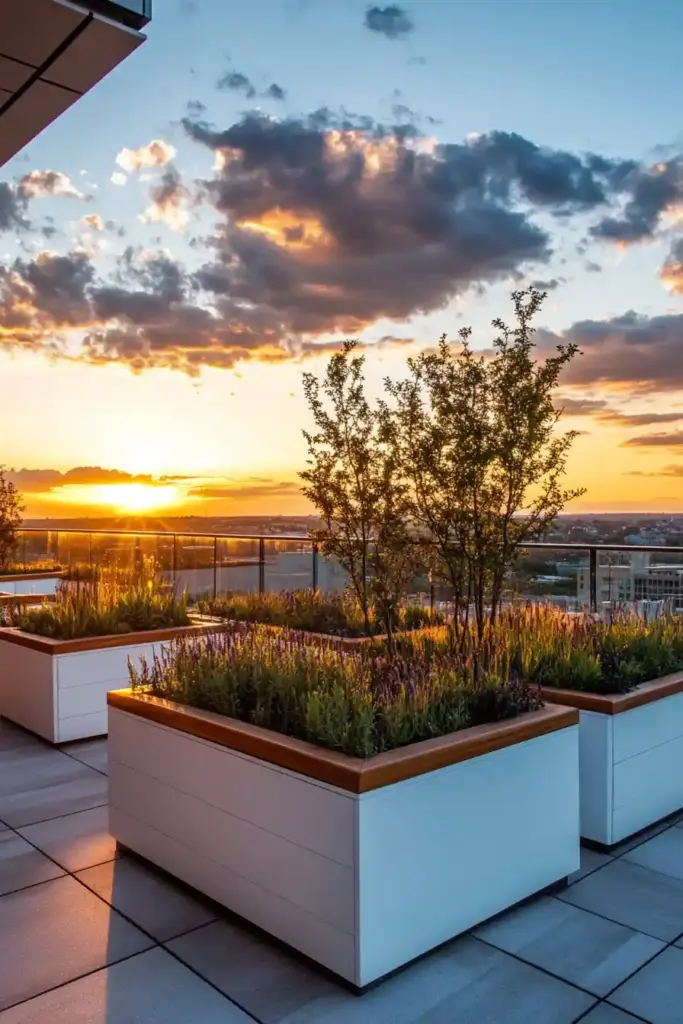
Small Yard, Big Style
Planters are the unsung heroes of small front yard design. They’re portable, customizable, and add depth and structure without permanent changes. With the right containers, you can elevate your curb appeal, define spaces, and introduce height variation—all within a compact footprint.
Plus, they’re perfect for renters or anyone looking to refresh their space seasonally.
How to Make Containers Work for You
- Frame entryways – Place matching planters on either side of your door or gate for instant symmetry.
- Layer heights – Use tall, medium, and low containers to add movement and rhythm.
- Divide zones – Line up planters to separate seating areas, pathways, or driveways naturally.
Choosing the Right Planters & Plants
- Use fiberglass containers for a sleek look and all-weather durability.
- Match container shape and color to your home’s architecture—modern homes pair well with clean lines; classic homes suit rounder forms.
- Great plants for containers:
- Dwarf shrubs like boxwood or juniper
- Trailing flowers like calibrachoa or sweet potato vine
- Aromatic herbs for beauty and utility
🪴 Container Tip: Group planters in odd numbers (like 3 or 5) for a more natural, balanced look—and don’t forget to elevate one or two on stands for dimension!
Conclusion: Small Yard, Big Possibilities
Don’t let limited square footage limit your creativity. With the right strategies, even the smallest front yard can become a stylish, functional, and welcoming extension of your home.
From vertical gardens to multi-purpose features and creative lighting, these ten landscaping ideas prove that great design isn’t about size—it’s about smart, intentional choices. Whether you’re going for minimalist modern or cozy cottage vibes, every inch of your front yard can be a reflection of your taste and lifestyle.
So go ahead—start small, dream big, and turn your front yard into the outdoor oasis you’ve always wanted.
🌿 Love gardening inspiration? Follow me on Pinterest for bold plant ideas, tips, and seasonal color!
More Posts
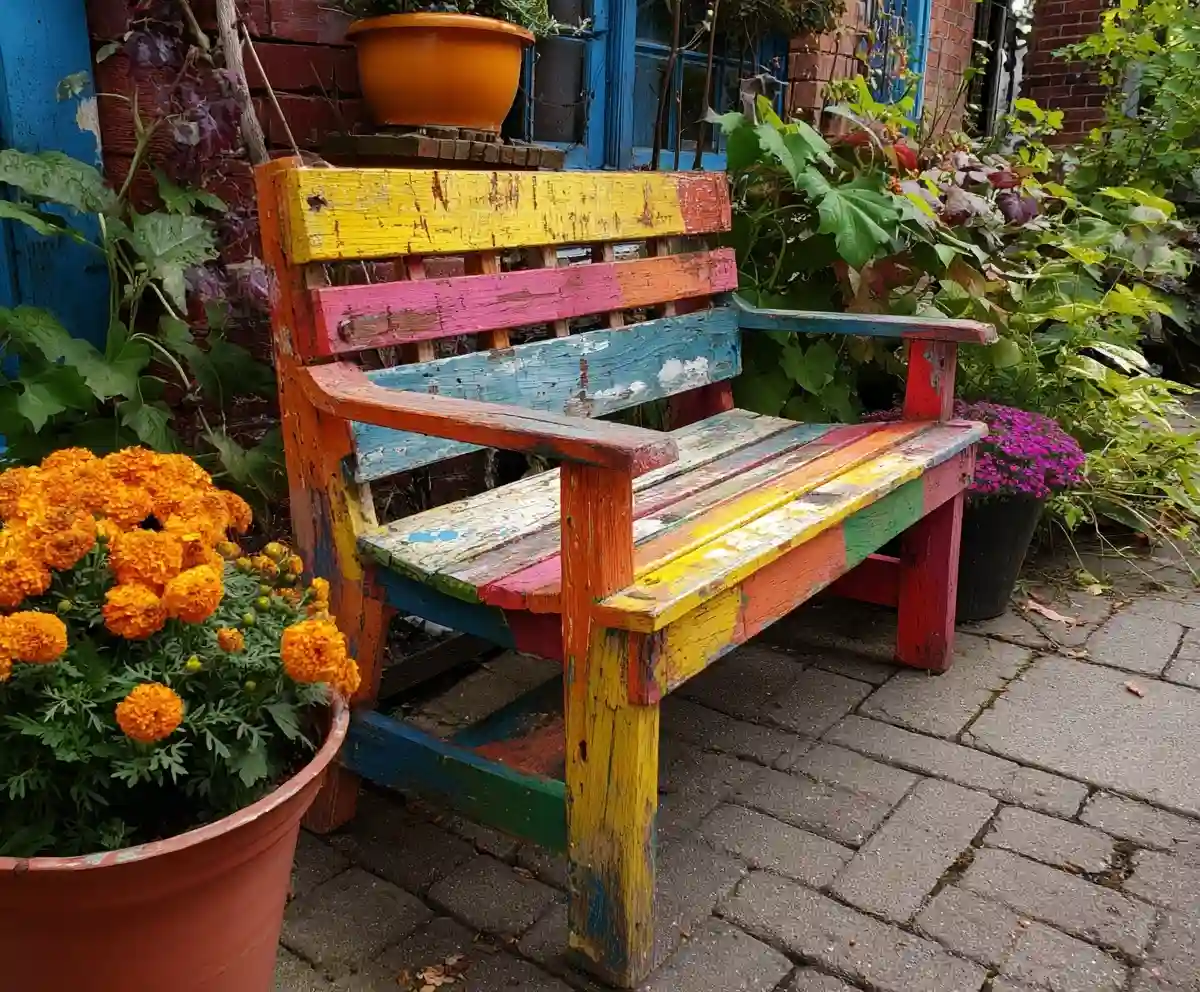
19+ Budget-Friendly Backyard Makeover Ideas
Backyard makeover ideas can turn even the most ordinary outdoor space into a warm, inviting retreat—without draining your wallet.
Read More →
21 Stunning & Simple DIY Clematis Trellis Designs
DIY clematis trellis designs are a beautiful way to blend creativity with function in your garden.
Read More →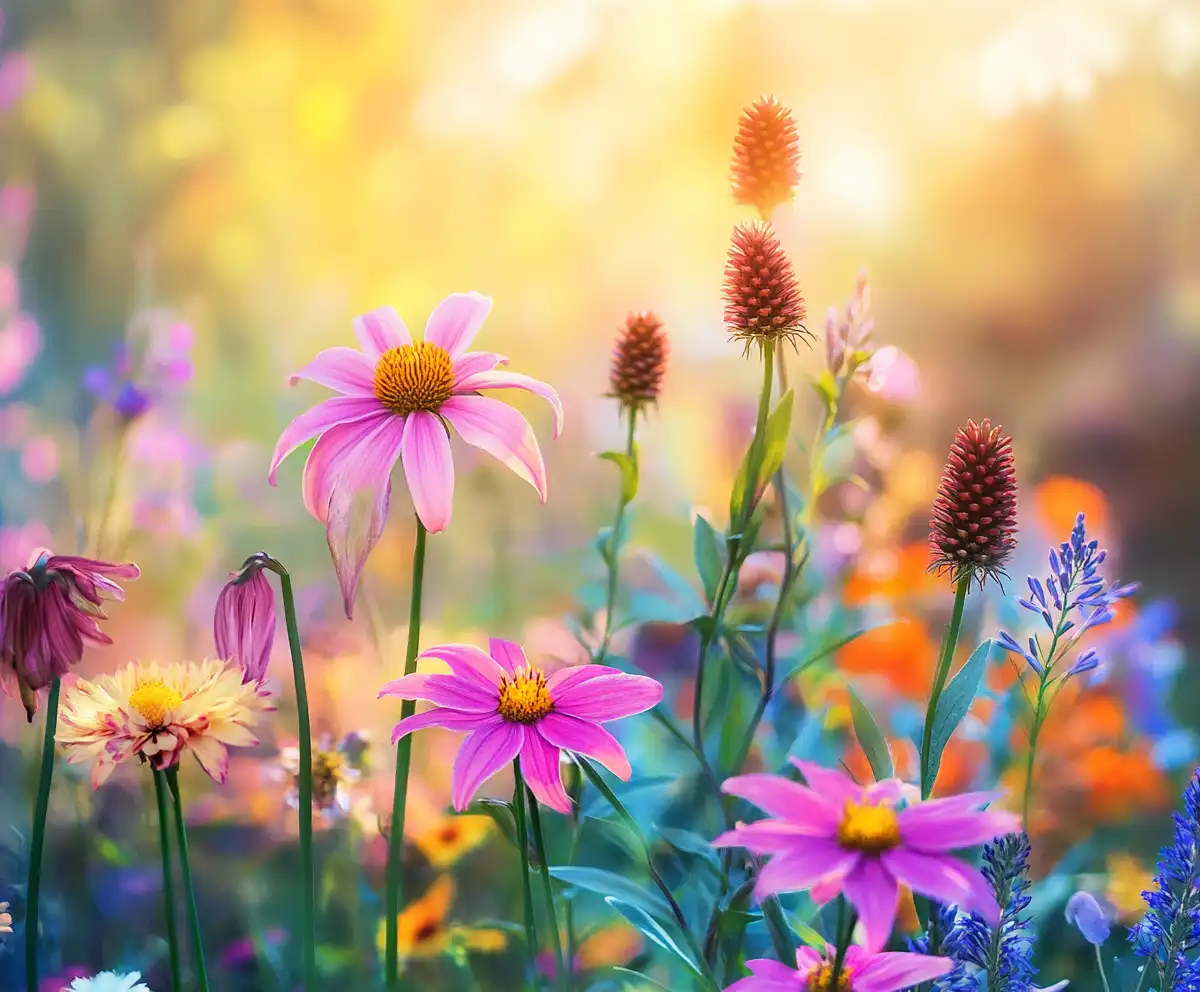
12 Full Sun Perennials That Bloom All Summer
Explore a selection of hardy perennials that flourish and bloom beautifully in full sun throughout the summer.
Read More →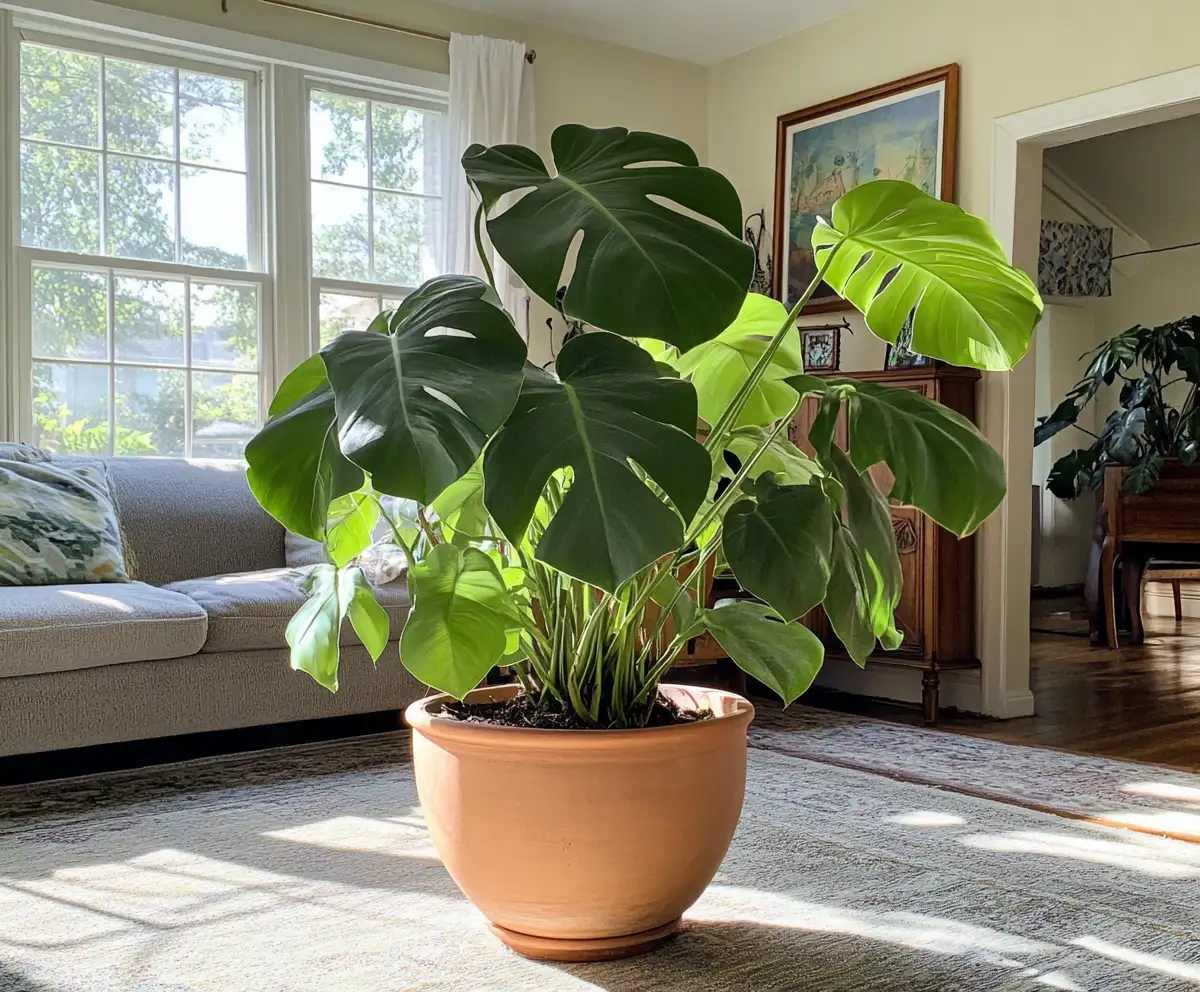
Houseplants for Living Room
Find the perfect houseplants to brighten and purify your living room while adding a touch of nature indoors.
Read More →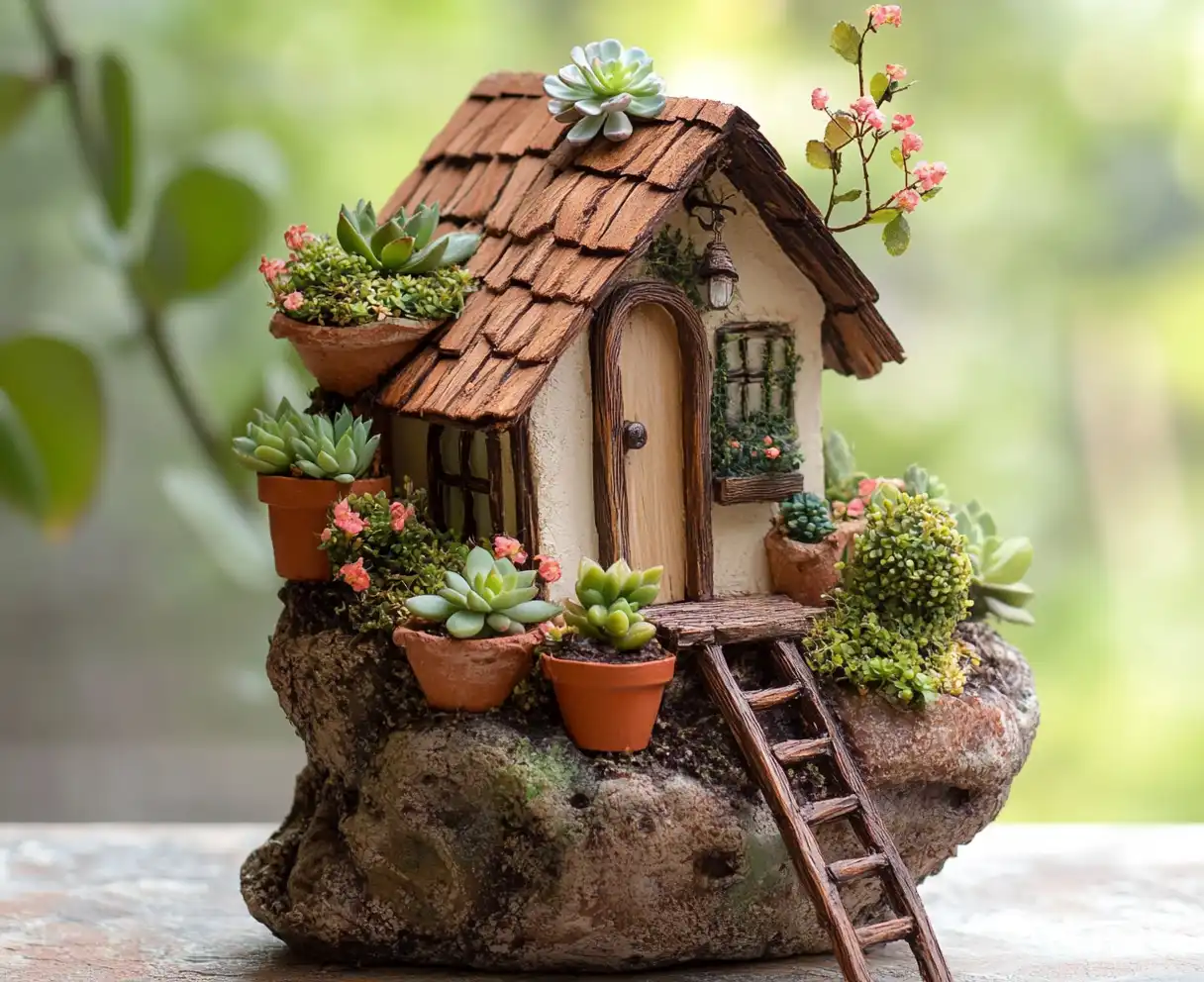
Backyard Play Area for Kids
Create a fun and safe backyard play area for kids with these inspiring design ideas and tips.
Read More →
Top Privacy Trees
Discover top tree varieties that provide natural privacy and enhance your outdoor space.
Read More →
